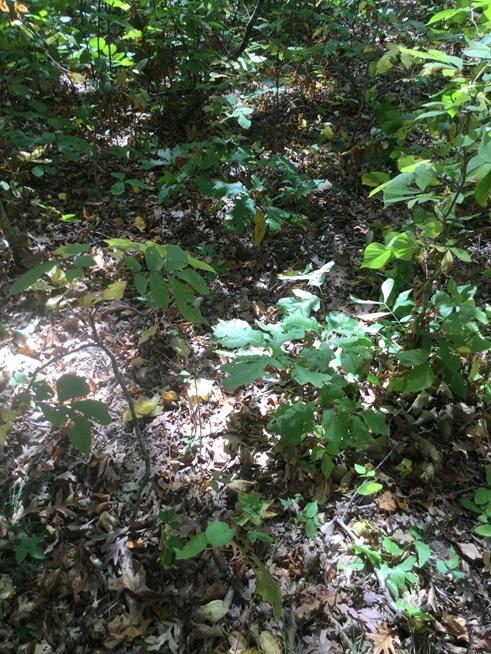Overview
The focus of this case is treating 25 acres of central hardwoods within a 59 acre sale. The 25 acre treatment area consists of three stands: one is a 5 acre central hardwoods type, another is an 18 acre oak type, and the third is a 10 acre oak stand but the treatment will take place on only 2 acres. These 25 total acres will be regenerated with a seed tree harvest with nearly all trees greater than 2" DBH harvested and leaving only scattered walnut, white oak, and some bur oak seed trees. A combination of mowing and herbicide application are to be used to reduce competing vegetation and ensure adequate regeneration.
Silviculture Objective(s)
There is minimal acreage of young hardwood forest found on the steep unglaciated topography in the Western Coulee and Ridges Ecological landscape. A goal of this harvest is to establish 50 acres of either an oak forest or a hardwood forest with a strong oak component. Within the treatment area, competing vegetation must be controlled to ensure the seed tree regeneration harvest is successful; this will consist of mowing honeysuckle, removing all undesirable stems between 2" and 12" DBH and spraying the stumps of hardwoods removed in this way with Glyphosate, and spraying undesirable woody invasive brush with Garlon 4. The other 34 acres of the 59 sold will be clearcut with 10% leave trees; the treatment of these 34 acres is not the subject of this case study.
Pre-treatment stand description and condition
Stand establishment and management history:
The area now known as Mount Hope Rearing Station was purchased by the Wisconsin DNR in 1955. Prior to its purchase by the state, the area was private farmland and, similar to most of the woodlands in Grant County, was heavily grazed by cattle in the past. This area has not been cut since its purchase.
Pre-treatment species composition:
The pre-sale timber cruise indicated that there are 298,332 board feet of saw logs and 353,372 board feet of all products.
Table 1: Trees per acre as a percentage of the total across the 25 acre treatment area as well as a breakdown of the board feet figures as a percentage of the total, by species. White ash, red oak, shagbark hickory, hackberry, bitternut hickory, sugar maple, and aspen collectively amounted to about 12% of the total board feet.
| Species | % Trees per Acre | % of Total Board Feet |
| elm | 22 | 8.7 |
| walnut | 16 | 28.9 |
| white oak | 14 | 20.8 |
| bur oak | 12 | 18.1 |
| basswood | 10 | 5.7 |
| white ash | 8 | |
| hackberry | 5 | |
| bitternut hickory | 4 | |
| shagbark hickory | 4 | |
| black oak | 4 | 6.0 |
| sugar maple | 1 | |
| red oak | 1 | |
| aspen | <1 |
Pre-treatment growth and stocking:
Figure 1 shows the overstory diameter distribution of the 25 acre treatment area.
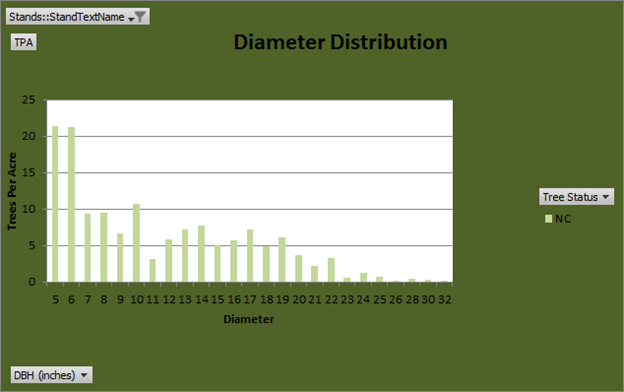
Figure 1: Diameter distribution for the total 25 acre treatment area which consisted of all or part of three stands.
Pre-treatment forest health issues:
There are honeysuckle and other undesirable species throughout the treatment area that would inhibit regeneration. There is some oak wilt in the stand but it is believed to have run its course; it is not recent, but rather occurred within the last 10 years.
Silviculture Prescription
Honeysuckle will be mowed with a Fecon brand mower and resprouts will be sprayed.
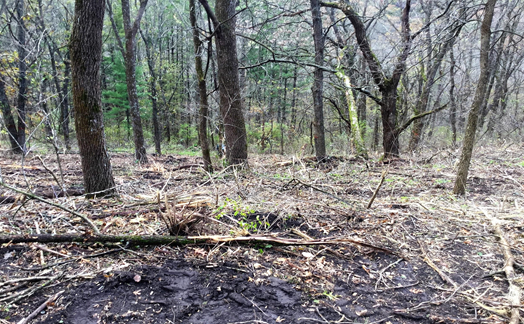
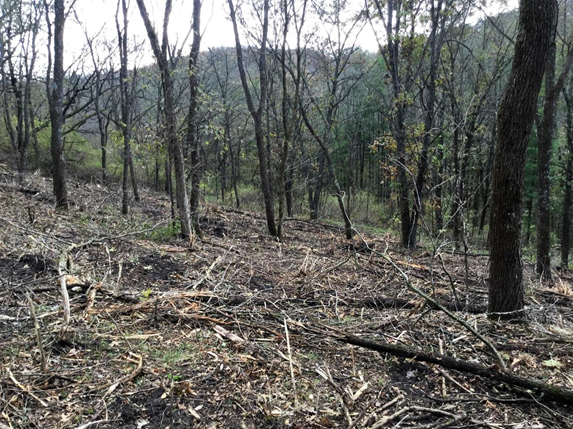
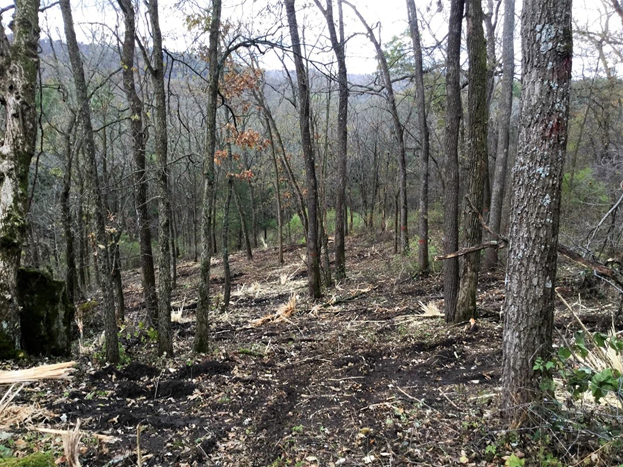
Figures 2, 3 & 4: Non-commercial invasive honeysuckle removal using a Fecon mower.
All undesired species with DBHs between 2" and 12" will be cut. The stumps of undesirable hardwood species will be treated with Glyphosphate while Garlon 4 will be used to treat woody invasive brush. The rule thinning method will be used to quantify the number of trees and their spacing; the forest type used will be northern hardwoods as it’s the best fit for this application.
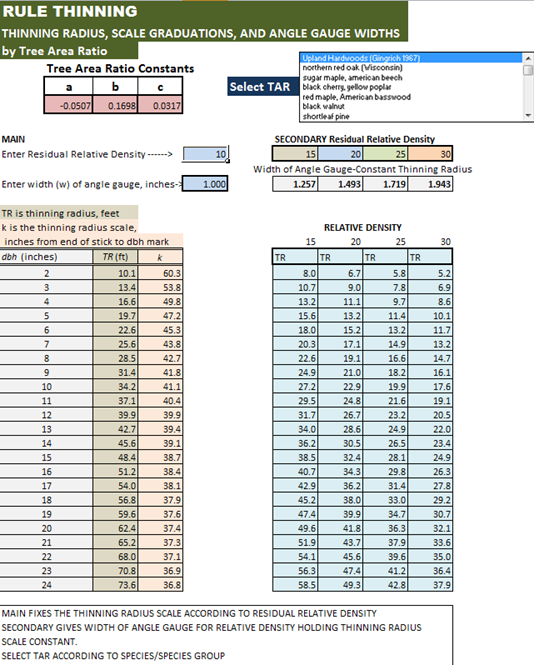
Figure 5: The Rule Thinning method which was used to determine leave tree density.
Reserve vigorous, quality white oak, walnut, and bur oak; they will be spaced using a target relative density of 20%. Artificial regeneration will consist of 200 white oak seedlings planted per acre to supplement natural regeneration from the seed trees and will be planted prior to the harvest.
Harvesting will take place between 15 October and 30 March. This time was chosen to protect NHI amphibians, take advantage of the fall mast crop, and minimize damage to native plants and birds. In addition, high risk harvest season for oak wilt in southern Wisconsin is 1 April – 15 July. There will be a significant amount of larger sawlog sized trees that are not commercially viable that will be girdled and allowed to stand dead on the sale.
What actually happened during the treatment
The honeysuckle within the treatment area has been mowed. Spraying the resprouts is planned but has not been carried out yet.
There are two components to the harvest: non-commercial and commercial. The non-commercial harvest, consisting of felling and treating 2"-12" DBH non-oak species, has been carried out. As of summer 2019 the commercial harvest has not occurred.
While the prescription called for 200 white oak seedlings per acre, due to the availability of additional seedlings the actual total is approximately 500 red and white oak seedlings per acre.
Timber was sold spring 2018 for $246,000 for the entire 59 acre tract, including the 25 acre treatment area. The timber was sold on a two year contract ending on March 31st, 2020, allowing two winters to get it cut.
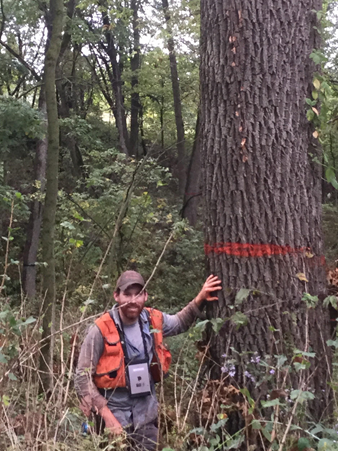
Figure 6: WI DNR forester Cody Didier next to a large walnut tree.
Plans for future treatments
Follow up treatment: the elimination of any missed invasive woody plants or resprouting stumps will take place on all 59 acres one year following the initial invasive species treatment. Harvest between 15 October and 30 March in order to take full advantage of natural regeneration, minimize impacts to NHI documented amphibians and native plants, and minimize the risk of further oak wilt in the stand.
Costs and economic considerations
2018 harvest value for the entire 59 acre sale: $246,000.
Other notes
This case study was developed with support from the United States Department of Agriculture's National Institute for Food and Agriculture (USDA-NIFA), Renewable Resources Extension Act (RREA). Project #MIN-44-E02, principal investigator Eli Sagor, University of Minnesota.
Summary / lessons learned / additional thoughts
A combination of mowing and herbicide application were used to reduce competing vegetation for a seed tree regeneration harvest occurring across 3 stands totaling 25 acres in size. Planted seedlings were sourced from southwest Wisconsin. If done again, seedlings sourced from farther south would be used for artificial regeneration to compensate for the changing climate.
Additional thoughts: Walnut acts as a pioneer species even though management guidelines say walnut is not known as a pioneer species.
